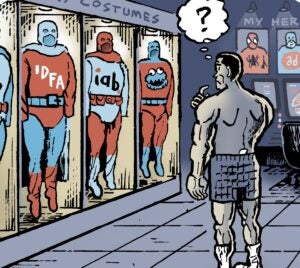 Tyler Fitch is Director of Yield Management at Mindjolt, an online games company. Fitch discussed recent trends he’s seeing on the publisher side.
Tyler Fitch is Director of Yield Management at Mindjolt, an online games company. Fitch discussed recent trends he’s seeing on the publisher side.
AdExchanger.com: What’s the pitch on games advertising for advertisers? Seems tough – considering people just want to play their games and not look at ads.
Actually it’s quite the opposite. Our users are usually killing time, so it’s seems they are much more willing to interact with ads. Performance has been great. Plus Advertisers are always looking for Pre-Game inventory.
Please discuss Mindjolt’s audience and scale. What types of advertising work best?
Despite recent changes to Facebook policies which have crippled the growth of many games and applications, Mindjolt continues to be one of the fastest growing apps on Facebook and all other Social Networks. Keep in mind, that before the Platform G acquisition of Mindjolt in March, the company only consisted of four people that managed to grow Mindjolt to over 20 Million Uniques. Since then, Colin Digiaro and Aber Whitcomb have done a great job of hiring some the best people in the industry to grow the platform. So I believe the scale of Mindjolt is just in its infant stages.
As for the audience, the “Soccer Mom” is our main demographic. This differs a little by which social network they are coming from but usually we see close to 70% of our users are Female.
How is Mindjolt media addressing monetization of their inventory? For example, how much goes to a yield optimizer? How much is sold direct?
Actually none goes to either. We are still trying to find the best fit for our direct sales, so right now I have only done a few one off campaigns. The remnant portion of the inventory is managed by myself. I really like what the yield optimizes are doing (maybe except for the Dick Cheney like “War on Malvertising” campaigns) and they have some brilliant people working for them, but as long as you give yourself access to the same demand sources it’s just not quite worth the cost. Pre-Game Video is also a big part of our monetization.
Have you seen any impact from the demand-side platform model?
Absolutely, I actually am having a tough time working with standard 3rd party networks because so much of my inventory is bought up by exchanges. I tend to think of 3rd party networks as floors for the exchange now and not actual advertisers.
Does Mindjolt have a data strategy as it relates to advertising?
As a publisher, it’s very hard to make data scale. Therefore I rely on DSP’s in order to sell data campaigns. My job is to make sure that DSP’s have access and that they pay a premium for that impression.
Mindjolt did just start bringing on virtual currency which makes our user data much more interesting. I can use my own scalable gaming segments to serve house ads using Lifetime Value to figure out a true CPM. This not only keeps users on the site (not pushing them to other 3rd party apps.) but also creates demand. This leads to an overall increase in remnant CPM’s on the site. These data segments include things such as game plays, when they play, and funding history.
What are the big trends you’re seeing today on the publisher side?
RTB has revolutionized the way I look at my inventory. Before RTB, I considered my job managing a portfolio of advertisers in a segmented and transparent environment. Now with RTB, I manage an “Imaginary” Portfolio in an even more segmented and transparent environment. By “Imaginary” I mean that DSP’s have gotten so good at arbitraging traffic that its detrimental to my business to use our true Managed 3rd Party CPM’s. So now I have to artificially inflate CPM’s to make sure that they pay a premium for those cherry picked impressions. This is a slippery slope though, because you can price yourself out of some DSP’s range.
Please discuss creative -as in the ad. Is this evolving at all? Isn’t the publisher at the mercy of advertiser’s creative?
Yes, creative is always evolving. Advertisers are getting smarter and smarter about what they want to get out of an ad. No longer is CTR the only metric that people use to judge performance. Therefore you tend to see a much more social feel to most ads. Also in the past year, the industry has done a great job of removing deceptive and distracting ads that really hurt the reputation of digital advertising.
Can you identify some needs in the marketplace that need to be addressed?
Getting access to the marketplace is the toughest thing for Publishers. The big three (Google, Yahoo, and Microsoft) only bid dynamically on their own ad exchanges. DART is expensive, Right Media is only a Marketplace (not an ad server), and Microsoft is going radio silent. Layering a marketplace on top of another ad server loses 5-10% of traffic just from discrepancies, plus whatever else is lost from daisy chaining impressions. This puts publishers in a very tough position.
How big is your team today? – How much can one person “run” as a publisher today?
I have had one employee under me in my life… I kept them for about 4 days. Not that they were a terrible person or anything, but I really think this is a one man job. I know people that do my job for other big publishers agree, your site becomes your baby and you do not want anyone else messing with it. Only somebody that works every day with a site and knows their advertisers well can really make the right adjustments. If I have a direct sales team, it changes the dynamic. Then, I need to work with the sales team and account managers so their campaigns run smoothly.
Follow Tyler Fitch (@tylerwfitch) and AdExchanger.com (@adexchanger) on Twitter.













